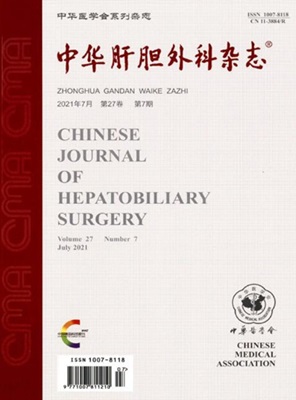中国肝细胞癌手术切除和热消融的疗效和安全性meta分析
Q4 Medicine
引用次数: 0
摘要
目的通过网络meta分析,比较肝细胞癌手术切除与热消融治疗的疗效和安全性。方法检索2010年1月1日至2017年12月1日中国生物医学、中国知网、PubMed、Embase和Cochrane图书馆中符合条件的随机对照研究(RCTs)相关文献,并按标准进行筛选。采用基于频率和贝叶斯方法的网络meta分析,比较手术切除(SR)、射频消融(RFA)和微波消融(MWA)三种治疗方法的1年、3年和5年生存率及严重并发症发生率。结果本研究共纳入24项随机对照试验。累积排序概率下曲面(SUCRA)结果显示,在纳入所有rct时,支持MWA的频率模型的5年总生存率最高(66.1%),而支持SR的贝叶斯模型的5年总生存率最高(64.7%)。当肝细胞癌肿瘤直径小于5 cm,肝功能为Child-Pugh A/B时,支持SR的频率和贝叶斯模型的5年总生存率最高(分别为89.1%和88.3%)。当所有rct或rct纳入肿瘤直径小于5 cm且肝功能为Child-Pugh A/B时,频率和贝叶斯模型支持的RFA均具有最佳安全性(严重并发症发生率)(分别为16.4%,18.7%,12.6%和12.8%)。结论早期小肝细胞癌应首选SR,而RFA和MWA各有适应证。关键词:肝癌;肝细胞癌;射频消融术;微波消融;手术切除;荟萃分析本文章由计算机程序翻译,如有差异,请以英文原文为准。
Network Meta-analysis on the efficacy and safety of surgical resection and thermal ablations for hepatocellular carcinoma in China
Objective
To compare the efficacy and safety of surgical resection and thermal ablations in patients with hepatocellular carcinoma in China using a network Meta-analysis.
Methods
References related to eligible randomized controlled studies (RCTs) were searched from China Biology Medicine, China National Knowledge Infrastructure(CNKI), PubMed, Embase and Cochrane Library from 1st January 2010 to 1st December 2017, and were selected according to the criteria. The 1-year, 3-year, and 5-year survival rates and incidence of serious complications were compared among surgical resection (SR), radiofrequency ablation (RFA), and microwave ablation(MWA) by network Meta-analysis based frequency and Bayesian methods.
Results
A total of 24 RCTs were included in this study. The results of surface under the cumulative ranking probabilities (SUCRA) showed that when all RCTs were included, the frequency model supported MWA had the highest 5-year overall survival rate (66.1%), while the Bayesian model supported SR had the highest 5-year overall survival rate (64.7%). When the tumor diameter of hepatocellular carcinoma was less than 5 cm and the liver function was Child-Pugh A/B, the frequency and Bayesian model both supported SR had the highest 5-year overall survival rate (89.1% and 88.3%, respectively). When all RCTs or RCTs were included with the tumor diameter less than 5 cm and liver function was Child-Pugh A/B, both the frequency and the Bayesian model supported RFA had the best safety (serious complications rate) (16.4%, 18.7%, 12.6 and 12.8%, respectively).
Conclusion
SR should be the first choice for early and small hepatocellular carcinoma, while RFA and MWA have their own indications.
Key words:
Carcinoma, hepatocellular; Radiofrequency ablation; Microwave ablation; Surgical resection; Meta-analysis
求助全文
通过发布文献求助,成功后即可免费获取论文全文。
去求助
来源期刊

中华肝胆外科杂志
Medicine-Gastroenterology
CiteScore
0.20
自引率
0.00%
发文量
7101
期刊介绍:
Chinese Journal of Hepatobiliary Surgery is an academic journal organized by the Chinese Medical Association and supervised by the China Association for Science and Technology, founded in 1995. The journal has the following columns: review, hot spotlight, academic thinking, thesis, experimental research, short thesis, case report, synthesis, etc. The journal has been recognized by Beida Journal (Chinese Journal of Humanities and Social Sciences).
Chinese Journal of Hepatobiliary Surgery has been included in famous databases such as Peking University Journal (Chinese Journal of Humanities and Social Sciences), CSCD Source Journals of China Science Citation Database (with Extended Version) and so on, and it is one of the national key academic journals under the supervision of China Association for Science and Technology.
 求助内容:
求助内容: 应助结果提醒方式:
应助结果提醒方式:


